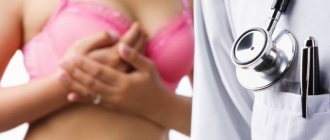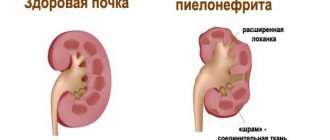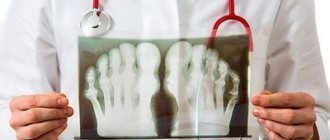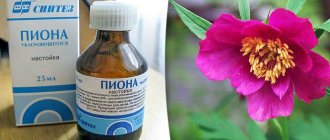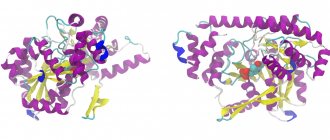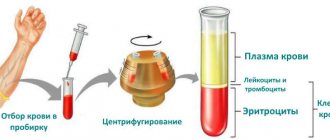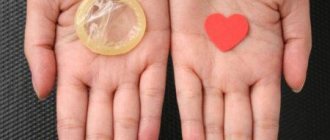Candidiasis is a disease of the mucous membranes that is caused by the yeast-like fungi Candida.
These microorganisms are part of the normal microflora of the vagina, mouth, and colon of many healthy people. The development of candidiasis is not caused by the presence of yeast-like fungi, but by their increased quantity. Reproduction of this type of microorganisms usually occurs with a decrease in local and general immunity.
Most often, candidiasis develops on the mucous membranes and superficial areas of the skin.
People with a pronounced decrease in immunity may develop candidiasis of internal organs.
Causes of thrush
Candida fungus belongs to the family of imperfect yeast-like microorganisms. It has an oval or round shape and forms pseudomycelium (elongated threads of cells), blastospores (cellular buds) and chlamydospores (double-walled spores).
Fungi are present in the environment, in some foods (kvass, sweets, beer), in the oral cavity, vagina and intestines of a healthy person. Science has more than 100 species of Candida, but only a few of them are dangerous to humans:
- albicans (Candida albicans);
- tropicalis (parapsilosis);
- krusei;
- glabrata.
Normally, their quantity in the body is minimal and is regulated by other representatives of the microflora and the human immune system. The onset of the inflammatory candidiasis process is provoked by the following factors:
- hormonal imbalance;
- intestinal dysbiosis due to long-term use of antibiotics;
- violation of the integrity of the skin or mucous membranes (wounds, burns, abrasions);
- chronic diseases of the digestive tract - irritable bowel syndrome, ulcers, atrophic gastritis, enterocolitis;
- diabetes;
- oncological diseases;
- human immunodeficiency virus (HIV);
- severe allergies;
- wearing synthetic underwear;
- breakdown;
- venereal diseases;
- poor nutrition – the predominance of carbohydrate foods in the menu;
- children or old age;
- decreased immunity.
Causes of candidiasis
The following factors can contribute to the development of candidiasis:
- taking antibacterial drugs with a wide spectrum of action;
- presence of HIV infection;
- decreased general immunity (due to emotional shock, sudden climate change);
- metabolic diseases (diabetes mellitus, ulcerative colitis, dysproteinemia, obesity, dysbiosis), diseases of the blood system, chronic infectious processes, leprosy, neoplasms, myxedema, thyrotoxicosis, vegetative-vascular dystonia with increased sweating, Itsenko-Cushing's disease, vitamin deficiencies;
- taking certain drugs that suppress the immune system (corticosteroids, cytostatics).
How is Candida transmitted?
Source of infection with Candida spp. – own microflora. When immunity decreases or against the background of other favorable factors, the fungus actively multiplies and replaces part of the beneficial flora. Infection by microorganisms from the outside is possible for the following reasons:
- unprotected sexual intercourse;
- oral caresses of the genitals;
- infection of the child during pregnancy and childbirth if the mother suffers from candidiasis;
- prolonged exposure to water (the fungus loves a moist and warm environment);
- damage to the skin or nail plate with manicure instruments;
- contact with infected domestic animals - puppies, calves, foals.
Symptoms
Genital thrush in men and women can have an acute and chronic course. Carriage of fungi of the genus Candida stands out separately. This is a pathological condition in which there is an increase in the number of fungal cells without the development of inflammatory signs, which is due to fairly strong local immunity or the characteristics of the pathogen. The carriage of fungal cells is accompanied by the release of a pathogen, so when having sex, genital thrush can develop in a healthy partner.
Types of thrush
The classification of candidiasis is varied. A doctor can determine the type of disease based on the diagnostic results. Depending on the severity of the course, the following forms of thrush are distinguished:
- Candida carrier . There are no symptoms of the disease, but an infected person can infect others.
- Acute form . Symptoms occur suddenly and greatly disturb the patient. The duration of the disease is 1–2 months.
- Chronic – complicated thrush caused by atypical pathogens. It is asymptomatic. Lasts more than 2 months.
- Persistent . Individual signs of pathology appear in increasing or decreasing order.
- Recurrent . The disease is characterized by periods of exacerbation and rest. This form of pathology is more common in women; symptoms increase before the onset of menstruation or in the 2nd half of the cycle.
Based on the nature of the spread of infection, the following forms of candidiasis are distinguished:
- Superficial . The inflammatory process affects the smooth skin of the face, nasal mucosa, palms, fingernails and toenails, perineal area and chest.
- Visceral (systemic) . Thrush of internal organs - stomach, esophagus, anus, eyes.
- Candidal sepsis is a severe form of systemic candidiasis. The fungus is transferred through the bloodstream from the main focus to other organs. The disease often ends in death.
Based on the location of the fungal infection, the following forms of candidal disease are distinguished:
- interdigital;
- urogenital;
- vaginal;
- candidomycosis - damage to the skin;
- onychomycosis - damage to the nail plates;
- candidiasis of the oral mucosa;
- thrush of the digestive system.
Treatment procedures for candidiasis
- Candidiasis is treated with various antifungal agents that have a suppressive effect on the fungus. Among modern drugs there are many effective treatments that can get rid of the problem in one go. But it is not recommended to select these remedies on your own, especially since taking one tablet usually does not end the treatment. For the purpose of prevention, a number of other drugs may be prescribed, which are important to use according to a certain scheme.
- A fungal infection can be treated using topical medications, not just tablets or capsules. These medications include creams or ointments. Most often they are prescribed if there is inflammation on the external genitalia, to relieve the obvious symptoms of the disease and alleviate the patient’s condition. In some cases, the use of tablets is not recommended. This applies to people suffering from allergic diseases, hypersensitivity to drug components, as well as during pregnancy or breastfeeding.
- In addition to medicines, the treatment uses washing and douching with various decoctions of medicinal herbs, as well as soda solution, as well as essential oils, potassium permanganate, Furacilin.
Furacilin tablets for solution preparation
Typically, these procedures are carried out both during the period of primary treatment and during prophylaxis. It is necessary to remember that before contacting a specialist for the first time for diagnosis and testing, these procedures are not recommended, so as not to blur the picture of the disease.
- Treatment of thrush includes adherence to diet, sleep and rest patterns, and abstinence from sexual intercourse. Confectionery products, carbonated sweet water, spicy foods, alcohol, and coffee are excluded from the diet. It is advisable to consume more vitamins, fruits, vegetables, herbal teas and water.
- Among the well-known drugs for candidiasis, the most popular are Clotrimazole, Nystatin, Pimafucin, Fluconazole, Flucostat. In each case, the decision to take this or that drug must be made by the doctor, based on the individual characteristics of the patient’s body. Treatment with general drugs is contraindicated during pregnancy, so as not to harm the health of the mother and the unborn child. In these cases, folk remedies, creams or ointments are usually used, sometimes suppositories are prescribed, but only at certain stages of pregnancy and under the supervision of a specialist.
Genital candidiasis occurs in almost every second patient, with characteristic signs of the disease. It should be remembered that if thrush was detected in a woman, the partner should also be examined to prevent re-infection of both.
After treatment, it is important to follow hygiene rules, support the immune system, and monitor nutrition. In case of exacerbation of chronic diseases of internal organs, you should definitely get tested for the presence of a fungal infection. This is also important to do after a cold, flu, or other illness that has been treated with antibiotics.
Signs of thrush
Candidiasis of the mucous membranes and skin is more common. The visceral type of the disease is typical for people with immunodeficiency conditions. The disease develops acutely: itching and burning appear. Areas of hyperemia with a white coating are visible on the skin; when the vaginal mucosa is affected, women experience a cheesy discharge with a characteristic fishy odor.
The severity of symptoms depends on the location of the fungal colony.
Without proper treatment, the disease progresses to a chronic stage, and in severe cases, sepsis develops.
Symptoms and treatment of candidiasis are established immediately for both partners. This approach helps prevent re-infection.
Skin lesions
You can see the characteristic signs of thrush in photos of people with candidomycosis. Depending on the location of the source of infection, the disease is divided into the following groups:
- Candidiasis of skin folds. In men, the intergluteal and scrotal areas are more often affected, in women - the mammary glands and armpits. At the initial stage of the disease, bubbles appear in the folds, later erosions appear. They grow, merging with each other. The skin takes on a dark red tint, sometimes with a blue tint.
- Thrush of the smooth part of the skin. Characterized by erythematous rashes of bright red color. Over time, the spots become covered with keratinized skin, and when scraped off, weeping erosions appear. In adults, candidiasis spots are localized in places where bandages and compresses are often applied.
- Damage to the scalp . Externally it looks like seborrheic dermatitis. The skin is covered with small white scales. In advanced cases, boils appear on the head, but the hair root is not damaged.
Vaginal candidiasis in women
It occurs in 75% of women, but with strong immunity it is asymptomatic. Acute vaginal candidiasis is characterized by the following manifestations:
- severe itching;
- white, cheesy, unpleasant-smelling vaginal discharge;
- burning when urinating;
- painful sexual intercourse;
- swelling, hyperemia (redness) of the vaginal mucosa and external genitalia;
Discomfort in the groin area with chronic thrush intensifies before the onset of menstruation. During other periods of the cycle, symptoms subside.
Without treatment, thrush on the labia leads to cystitis and urethritis. Often yeast-like fungi affect the vulva, cervix and uterine cavity.
Thrush in men
Genital candidiasis manifests itself in the form of posthitis (inflammation of the foreskin), balanitis (damage to the head of the penis) or a combination of both. A fungus on the penis causes a rash in the groin area. Red spots are covered with scales, sometimes small bubbles with transparent contents appear on the head and testicles.
Other symptoms of candida infection in men include the following:
- unbearable itching;
- burning when urinating;
- redness and swelling of the foreskin;
- enlargement and hardening of lymph nodes;
- pain during sexual intercourse;
- the appearance of a white coating on the skin and head of the penis;
- inflammation of the foreskin.
Articles on the topic
- Broad-spectrum antifungal drugs in tablets - a review of the best for children and adults
- Fungus in the throat - signs and manifestations, analysis, drugs and folk remedies
- Fungal diseases in humans
Less common in men is infection by Candida fungi in the urethra and urethra. The incubation period lasts from 2 weeks to 2 months. Then the following symptoms appear:
- mild itching and burning in the urethra;
- scanty watery discharge with whitish patches;
- cutting pain;
- unpleasant smell.
Candidiasis of the oral mucosa
When fungi are localized in the oral cavity, candidal stomatitis may develop. The disease is characterized by the following symptoms:
- swelling of the gums and tongue;
- small areas of redness;
- white coating on the palate, nasopharynx;
- wounds and ulcers on the inside of the lips, cheeks.
In severe cases, the fungal disease is accompanied by pharyngitis and sore throat. In parallel with candidiasis infection of the oral cavity, cheilitis is possible - damage to the lips. They become swollen, dry, and covered with crusts. Seizures form in the corners of the mouth.
Gastric candidiasis
Mycotic lesions of the gastrointestinal tract (gastrointestinal tract) are rare. The diseases are characterized by the following symptoms:
- an increase in body temperature to 38–39° C;
- abdominal pain;
- night sweats;
- the appearance of an unpleasant taste in the mouth;
- fatigue;
- lack of appetite;
- heartburn;
- diarrhea or constipation;
- intestinal flatulence;
- tingling and numbness of the limbs.
Interdigital thrush
Most often appears on the feet between the 3rd and 4th toes. The pathology is accompanied by the following symptoms:
- redness of the skin fold between the fingers;
- the appearance of bubbles with clear liquid;
- inflammation and redness of the nail folds;
- clear restriction of healthy skin from the source of infection;
- itching of the interdigital space;
- discomfort when moving your arm or leg.
Treatment of candidiasis
The main goal of treating candidiasis is to eliminate the factors that contribute to its occurrence.
To treat candidiasis, various drugs are used, some of which are applied topically (vaginal suppositories, cream), others - orally (capsules, tablets, injection solutions).
When treating candidiasis in men, manifested in the form of candidal balanoposthitis (damage to the foreskin and glans penis), only local treatment with clotrimazole cream is sufficient. The duration of treatment is 5-7 days.
You can also take 150 mg of fluconazole orally as a single dose, but this is usually not necessary.
Treatment of candidiasis in women depends on how severe the disease is. For mild forms of vulvovaginal candidiasis, only local treatment with vaginal suppositories with clotrimazole, miconazole, natamycin or nystatin is sufficient.
It has now been established that nystatin is not a very effective drug in the fight against candidiasis.
For mild cases of the disease, local treatment of candidiasis can be replaced with a single dose of 150 mg of fluconazole orally.
In some cases, complementary treatment in the form of immunotherapy, restorative drugs, and physical therapy may also be prescribed.
If candidiasis recurs frequently, other candidiasis treatment options may be used.
Candidiasis in children
Due to the imperfection of the immune system, young children are more likely than adults to be susceptible to candidiasis infection.
Fungal skin infections in infants are accompanied by constant crying, sleep disturbances, anxiety, and fever.
Due to the thinness and increased sensitivity of the skin, ulcerations and weeping eczema immediately appear on the child’s body.
If the mother has cutaneous candidiasis, the fungi enter the child’s body during feeding. A whitish coating, wounds and cracks appear on the cheeks and the inside of the lips. The child refuses to eat, becomes irritable and whiny. Without treatment, fungi penetrate into the cavity of the stomach and intestines and cause the following symptoms:
- diarrhea;
- vomiting;
- swallowing disorder;
- general weakness;
- abdominal pain;
- colic;
- bad breath.
Thrush in men and its symptoms (what the glans penis looks like)
The symptoms of candidiasis are extremely unpleasant, especially if the disease does not occur in a latent (asymptomatic) form. Here are the main ones, visually distinguishable on the head of the penis:
- hyperemic spots, with a weeping surface and a grayish coating;
- swelling of the head and increase in size;
- formation of bubbles and crusts;
- foci of inflammation and erosion;
- microcracks and microtraumas from scratching;
- inflammation of the foreskin.
The “troubles” on the head include:
- discharge in the form of “curdled flakes”;
- peroxided unpleasant odor;
- unbearable itching, burning sensation and pain when urinating;
- on palpation - tenderness of the inguinal lymph nodes;
- during sexual intercourse and erection - severe pain and discomfort.
Consequences
Severe complications of thrush occur rarely and depend on the degree of decreased immunity and the presence of concomitant diseases. Without treatment, the following consequences are possible:
- Iron-deficiency anemia;
- haemorrhoids;
- damage to the liver, kidneys;
- inflammation of the prostate;
- cervical erosion;
- candidal cystitis, urethritis;
- salpingitis - inflammation of the fallopian tubes;
- ulcerative enteritis or colitis - intestinal damage;
- infertility;
- phimosis is a narrowing of the foreskin of the penis.
Thrush is especially dangerous for pregnant women:
- Frequent relapses of the disease lead to loosening of the mucous membrane, which provokes ruptures during childbirth, vaginitis or endometritis (inflammation of the vagina or endometrium of the uterine body) in the postpartum period.
- Visceral candidiasis is dangerous due to damage to the internal organs of the fetus.
- Thrush can be passed from mother to child as it passes through the birth canal.
Candidiasis during pregnancy
Since a woman’s immunity is significantly weakened during pregnancy, treatment for candidiasis necessarily includes intensive vitamin therapy. It is necessary to completely stop taking antifungal drugs orally, and use representatives of this pharmacological group mainly in the form of vaginal suppositories, ointments, creams and gels. In addition, doctors do not prohibit douching with decoctions of chamomile and calendula, using an alkaline solution (using baking soda), and sitz baths with medicinal herbs.
Diagnostics
If any symptoms appear, consult a gynecologist, urologist or dermatologist. During the examination, the doctor reveals inflammation, rash, and white plaque on the mucous membranes. To confirm the diagnosis, the following laboratory tests are prescribed:
- DNA diagnostics (PCR - polymerase chain reaction). For the study, a smear is taken from the surface of the vaginal mucosa in women or the urethra in men. For superficial forms of the disease, scraping is done from the skin or nail. The material is examined under a microscope. If Candida is not detected, a negative result is given.
- FUNGIFAST AFG test . Determines the sensitivity of microorganisms to fluorocytosine and other active ingredients of antimycotics. The analysis is prescribed to exclude resistant microorganisms during repeated treatment.
- Enzyme immunoassay blood test . Detects igg antibodies to the causative agent of thrush. The result is considered positive if the titer is greater than 1.
Diagnostic methods
The first stage of laboratory diagnostics is the collection of material for research. These can be scales from the macerated edges of erosions, scrapings, smears, washings, plaque from mucous membranes, skin and its appendages, sputum, urine, feces, as well as pieces of tissue obtained as a result of a biopsy.
Then a smear microscopy is performed, if necessary, a pure culture of the fungus is isolated and its sensitivity to drugs is determined.
7.1. Microscopy
Confirmation of a candida infection is the detection of C. albicans under a microscope. The presence of pathogenic forms of the fungus (blastospores in the budding stage, pseudomycelium and hyphae), as well as damage to the surrounding tissue (signs of inflammation, cell necrosis) indicates the development of the disease.
In acute forms of candidiasis, many budding cells are observed, and in chronic forms, hyphae are observed.
7.2. Isolation of a pure culture of the pathogen
The fungal culture from the resulting native material is sown on various nutrient media. The seeded nutrient medium is placed in a thermostat, the temperature is set to 22-37 degrees, and the result is assessed after 1-5 days.
To identify the pathogen, a germ tube formation test (germ test) is also performed. To do this, the fungal culture is placed in a special medium and kept in a test tube for 2-3 hours. Additionally, a carbohydrate breakdown test is performed.
Currently, there are ready-made test kits that make it possible to quickly and easily identify C. albicans. They are reliable and do not require highly qualified personnel.
7.3. Determination of sensitivity to antibiotics
To determine the sensitivity of fungi to antimycotic drugs, standard antimycotic discs are applied to the surface of a Petri dish with the resulting culture: Nystatin, Clotrimazole, Fluconazole, Amphotericin B, Ketoconazole, etc.
Next, the cultures are kept in a thermostat for 24 hours, after which the inhibition of colony growth in the zone of action of one or another antifungal agent is assessed.
7.4. Biological sample
It is rarely used in everyday medical practice. Its essence lies in the fact that experimental white mice or rabbits are injected with 1 million fungal cells, causing the death of mice in 5, and of rabbits in 9 days.
7.5. Immunological diagnostics
It is prescribed in cases of suspected deep and disseminated candidiasis, since it is quite difficult to isolate the fungus from internal organs.
Its types are:
- 1Agglutination reactions.
- 2Precipitation reactions.
- 3 Complement fixation reaction.
- 4ELISA, including solid phase.
Other types of laboratory diagnostics of candidiasis include allergy tests, PCR (detection of Candida albicans DNA), etc.
How to treat thrush
Superficial severe forms of mycoses are treated in the dermatovenerological clinic, vulvovaginitis - in the gynecology department, and diseases of the male genital area - by a urologist. The treatment regimen is selected depending on the stage and type of the disease:
- The mild superficial form of candidiasis is eliminated by the use of local agents - antifungal gels, ointments, suppositories. They are not absorbed into the bloodstream and destroy local foci of infection. Popular drugs include Clotrimazole, Pimafucin .
- Treatment of the visceral form is carried out using systemic antimycotics. This approach prevents the development of sepsis and other dangerous complications. Patients are prescribed Fluconazole, Itraconazole .
Additionally, the doctor gives nutritional recommendations. Patients with thrush should exclude the following foods from their diet:
- sweets;
- yeast baked goods;
- bread;
- smoked meats;
- vinegar;
- pickled vegetables;
- hot spices;
- fatty foods;
- fast food;
- beer, kvass
Medicines for candidiasis
The basis of treatment is antifungal agents in the form of tablets, suppositories, and ointments. They suppress the active growth of Candida and eliminate unpleasant symptoms. In addition to antimycotics, the following groups of medications are prescribed:
- Immunomodulators – Interferon, Lykopid, Dekaris . Increases the body's ability to resist disease.
- Vitamins – AlfaVit, Multi-tabs . Replenish the lack of nutrients and speed up recovery.
- Preparations with lactobacilli - Acylact, Linex, Hilak Forte . Restores the balance of beneficial bacteria in the body.
Systemic drugs
They act more slowly than local agents, but help achieve a lasting therapeutic effect. In practice, the following medications are used:
- Nystatin . It disrupts the metabolism inside the pathogenic cell, leading to its death. Resistance of microorganisms to the drug develops slowly. Nystatin is used to treat and prevent thrush. Adverse reactions are possible when taken: nausea, chills, abdominal pain.
- Fluconazole . Increases the permeability of the spore shell, disrupts its growth and division. The drug is prescribed for generalized candidiasis and deep mycoses. Fluconazole is contraindicated in children under 4 years of age and is used with caution in severe liver or kidney disease. During use, nausea, diarrhea, and skin rash may occur.
- Ketoconazole . Changes the lipid composition of fungi, helps to stop the growth and reproduction of microorganisms. The tablets are not prescribed to pregnant and lactating women, or people allergic to ketoconazole. During treatment, headaches, drowsiness, and constipation are possible.
Medicines for local treatment
Such medications have a rapid therapeutic effect and reduce the load on the stomach, liver and kidneys. Local preparations are applied to the skin (ointments, gels) and inserted into the vagina or rectum (suppositories). For the treatment of candidiasis the following are used:
- Pimafucin - vaginal suppositories. Violates the integrity of cell membranes, leading to the death of the fungus. Suppositories are used for thrush in women. They are contraindicated in case of intolerance to natamycin. During treatment, nausea, diarrhea, and mild irritation of the vaginal mucosa are possible.
- Lactozhinal. Local therapy for infectious and inflammatory diseases of the female reproductive system not only allows the destruction of pathogenic microorganisms, but also inevitably leads to an imbalance in the beneficial microflora of the vagina and a decrease in local immunity. If you do not quickly restore the lactoflora, activation of opportunistic microflora is possible, which will lead to an exacerbation of thrush or bacterial infections. For the same reason, antifungal therapy for vaginal candidiasis may not be effective enough. Therefore, it is important, after the first stage of treatment aimed at eliminating the infection, to carry out the second stage - to restore the balance of beneficial microflora with the help of Lactozhinal capsules. This is the only tribiotic drug registered in the Russian Federation. Laktozhinal quickly restores the pH and microflora of the vagina and protects for a long time from re-exacerbation of bacterial vaginosis and thrush. Two-step therapy has recently become the gold standard for the treatment of conditions accompanied by pathological discharge. Many experts are confident that only this method can provide a pronounced and long-term therapeutic effect, strengthen local immunity, which serves as the prevention of subsequent exacerbations.
- Nystatin (ointment) . Has the same mechanism of action as tablets. The ointment is used for candidiasis of the skin and mucous membranes. It is applied in a thin layer to the affected area 1-2 times a day. The drug is contraindicated in case of intolerance to nystatin. With prolonged use, diarrhea, vomiting, and chills are possible.
- Lugol's solution with glycerin . It has an antimicrobial effect, cauterizes wounds and ulcers. Used to treat candidal stomatitis in children and adults. The solution is used to treat the affected areas up to 2 times a day. The drug is contraindicated in case of hypersensitivity to iodine. Sometimes it causes irritation of the mucous membranes and skin, Quincke's edema, and runny nose.
Folk remedies
The basic treatment regimen is complemented by decoctions, infusions and ointments made from herbs. Use them only after consulting your doctor. The following recipes help with candidiasis:
- Mix 30 g each of flowering hemlock tops, walnut leaves and hellebore root. Pour the raw material with 150 ml of water and boil for 30–40 minutes. Melt 200 g of pork fat in a steam bath, add 100 ml of broth. Refrigerate and use for superficial candidiasis 2-3 times daily.
- Pour 3 tbsp. spoons of dried calendula flowers 500 ml of boiling water. Cover with a terry towel and leave for 40 minutes. Use the infusion to wash the genitals 2 times a day.
- Pour 300 ml of boiling water over 15 g of juniper. Leave for 3 hours. For gastric candidiasis, take 1 tbsp. spoon 3 times a day. The course of treatment is 2 weeks.
Relapse of candidiasis and reinfection
After treatment, a woman is not 100% protected from candidiasis.
She may become infected again.
In addition, after a course of therapy, candida usually remains in the body.
Therefore, fungal inflammation of the labia may recur.
If this happens 3 times a year or more often, recurrent vulvovaginitis is diagnosed.
This form of the disease requires long-term treatment.
Fluconazole 150 mg is usually prescribed once a week.
A woman takes these pills for 6 months.
Prevention
To prevent microflora disturbances, doctors recommend eating more fermented milk products and vegetables with antimicrobial effects - garlic, lingonberries, grapefruit. To avoid the development of candidiasis, follow these rules:
- avoid casual sex;
- wear underwear made of cotton fabrics;
- after a course of antibiotic therapy, take probiotics;
- observe the rules of personal hygiene;
- Treat illnesses in a timely manner and undergo preventive examinations.
Treatment with folk remedies
Alternative medicine methods help to successfully treat candidiasis during pregnancy, but are also reliable therapeutic measures for other categories of patients. In the absence of an allergic reaction to herbal components, here are time-tested recipes for treating candidiasis:
- You need to prepare sea buckthorn oil at home or buy it at a pharmacy, which should be applied to the affected areas of the mucous membrane three times a day using a cotton swab.
- It is recommended to prepare a decoction of sage, calendula, oak bark, nettle, and chamomile using the classic method. In addition, you can take advantage of diluted aloe juice and its healing properties.
Diet
The fact is that candidal fungus feeds on some of the foods that a person eats, which allows him not only to maintain his vital functions, but also to actively grow and reproduce. For this reason, the main principle of dietary changes can be called the exclusion from the diet of foods that Candida eats. In the absence of nutrition, the fungus will lose the ability to reproduce and be fully active.
When following a diet, you should “forget” about the following foods:
- alcoholic drinks;
- sugar and sweets (sweets, cookies, cakes, chocolate, pastries, ice cream), as well as sugar substitutes;
- rich pastries and white bread (or better yet, give up bread altogether, or use yeast-free bread);
- sweet fruits;
- honey, jam, jam, condensed milk, syrups;
- vinegar, sauces, marinades;
- fresh milk.
Despite the large number of restrictions, many healthy and tasty foods are allowed for consumption, which will not only help eliminate the problem as quickly as possible, but will also improve the functioning of the stomach and intestines. For candidiasis, it is recommended to use:
- stewed fruits and vegetables;
- berries: sea buckthorn, lingonberries, blueberries, cranberries;
- fresh herbs;
- boiled lean meat;
- lean fish;
- liver and kidneys; eggs;
- olive or linseed oil;
- buckwheat and rice porridge;
- seaweed;
- carrot juice;
- pumpkin seeds and sesame seeds;
- kefir,
- herbal teas with rose hips, plantain, oregano, chamomile, hawthorn.
The diet for the treatment of candidiasis should be followed for at least 3-4 months.
conclusions
- Candidiasis is a fungal disease of the entire body that can be superficial or invasive.
- Candidiasis is caused by yeast-like fungi of the genus Candida, which surround a person everywhere.
- The infection multiplies in the body when favorable conditions occur - in an acidic environment, an abundance of nutrients, reduced immune activity, and disruption of the microflora.
- Candidiasis is treated with antimycotics. For superficial forms, local agents are used; for chronic and invasive forms, local and systemic drugs are combined.
- To recover, you need to eliminate the provoking factor (medicines, bad habits, hormonal imbalances, abuse of antibiotics).
- Intestinal candidiasis can manifest itself as symptoms of dysbiosis - bloating, heaviness in the abdomen. Improvement in well-being will not occur until the diagnosis is accurately established. Read all the details about the diagnosis and treatment of intestinal dysbiosis here.
Features of treatment
Pathogenic microflora and fungal growth are stopped with antifungal drugs and antibiotics. These are the main therapeutic agents that eliminate the cause of candidiasis. The rest are prescribed depending on the location of the pathogenic process.
Medicines for candidiasis
The most common antifungal agents for internal use are:
- Nystatin;
- Pimafucin;
- Futsis;
- Levorin.
The dosage is determined by a specialist, who also sets the duration of therapy.
For candidiasis of the gastrointestinal tract, esophagus, intestines, stomach, tablets are prescribed to normalize the intestinal microflora, improve the functioning of the tract, facilitate the process of defecation, and relieve spasms:
- Probiotics – Laktiale, Hilak forte, Laktovit, Bifidumbacterin, Smecta.
- Antispasmodics – No-shpa, Meverin, Drotaverin.
- To eliminate bloating and rumbling - Espumisan, Valerian, Kolykid.
- Removal of toxins – Activated carbon, Enterosgel, Atoxil.
- Vitamins to strengthen the immune system.
To improve stomach function and reduce acidity levels, the following are prescribed:
- Almagel;
- Domrid;
- Ranitidine;
- Omez.
For intestinal thrush concentrated in the lower section, ointments for external use and suppositories with antifungal, anti-inflammatory, and antipruritic effects are prescribed.
- Pimafucin;
- Relief;
- Clotrimazole;
- Miconazole;
- Isoconazole;
- Suppositories made from sea buckthorn, propolis, with adrenaline.
Traditional recipes in the form of tampons with sea buckthorn oil, calendula, and honey help eliminate unpleasant symptoms. Make baths for 20 minutes from medicinal plants - chamomile, thyme, nettle, oak bark.
Briefly about the causative agent of the disease
Candidiasis was first described in 1839 by B. Langenbeck; in 1843, other scientists managed to isolate the causative agent of infection from culture. The genus Candida has about 150 species. Approximately 20 of them are of clinical significance. From the point of view of the development of diseases, the most dangerous are:
- C. albicans;
- C. tropicalis;
- C. glabrata;
- C. parapsilosia.
The fungus is a fairly large unicellular microorganism of round or oval shape. It is distinguished from other families by the ability to form pseudomycelium (by turning cells into long threads), as well as blastospores (bud cells concentrated on pseudomycelium). Thanks to these properties, candida can live not only on the surface of the skin and mucous membranes, but also penetrate into their deep structures, blood vessels, and migrate towards internal organs.
The infection is ubiquitous. You can “catch” candidiasis from pets, through vegetables and fruits, from soil, and some food products (fermented milk, confectionery, baked goods). However, despite the large number of external sources, in most cases, candidiasis is of endogenous origin - the patient infects himself. Typically, candida multiplies intensively in the intestines, and from there migrates to the mucous membranes and skin.
Infection is also possible from another person (which is more common in children who become infected from their parents) in domestic conditions and through sexual contact. During sex, infection is possible when encountering a previously unknown strain of the pathogen or when a large number of candida come into contact with healthy mucous membranes. This is how men often get candidiasis. The likelihood of a woman becoming infected from a sexual partner is minimal. Also, nosocomial infection cannot be ruled out, which is more often observed in HIV patients (the oral mucosa is affected).
Fungi have dermatonecrotic (destroy the skin) activity, secrete proteolytic enzymes, hemolysins, causing inflammatory, erosive, necrotic changes in the affected areas. Due to the toxic properties, itching, burning, and pain occur in areas of mass accumulation of candida.
Reasons for the activation of the fungus
Normally, the growth of candida is inhibited by the normal microflora of the body. Thanks to beneficial bacteria and the work of local immunity, an environment unfavorable for the microorganism is maintained. However, the situation may change. Candida begins to multiply intensively if:
- the skin or mucous membranes are heavily contaminated with fungus (for example, when the head of the penis comes into contact with the vaginal secretion of a sick partner);
- a person takes antibiotics (beneficial microflora dies along with pathogenic ones, and candida loses competition);
- the humidity and temperature of the environment increases (sweating occurs, sebum is secreted more abundantly, which fungi use as a nutrient medium);
- the pH of the body’s environment changes (for example, with diabetes, consumption of large amounts of carbohydrates, abuse of protein foods, metabolic disorders);
- a person is constantly in contact with rotten vegetables and fruits, yeast (in winemaking, bakery industry);
- immunity decreases while taking medications (antibiotics, glucocorticoids, chemotherapy, immunosuppressants);
- decreased resistance during nutritional exhaustion, severe diseases (HIV, tuberculosis, endocrinopathies), after operations.
Good times for the fungus can come during pregnancy (due to physiological immunodeficiency caused by hormonal changes), while following strict diets. Chronic stress, physical and psycho-emotional stress are considered to be provocateurs of candidiasis, since they are also likely to cause hormonal fluctuations.
Treatment of the disease
Thrush brings a lot of trouble, causing discomfort to both women and men. But this disease is quite treatable. In pharmacology, there are many tablets, suppositories, ointments and other drugs that actively fight the disease. In cases where thrush is chronic or acute, therapy is aimed at reducing the level of fungi and restoring normal microflora.
In the treatment of thrush, the following medications are used:
- Antibiotics of a number of triazoles are effective; symptoms go away after the first dose, but doctors recommend taking a second capsule after 5 days to avoid recurrence of thrush. The main drugs in this series are Flucostat, Diflucan, Mikosist. Typically, tablets are produced in a dosage of 150 milligrams.
- Antibiotics of the polyene series - the course of treatment with the drug is 10 days. The main representatives: Nystatin, Bifonazole.
- Antibiotics of a number of macrolides - these medications have a wide spectrum of action. They can be taken orally, based on the doctor's recommendation. The course of treatment is 10 days. The most well-known drugs are Pimafucin and Natamycin.
- Combined drugs are the most popular drugs; they combine several types of antibiotics. They can come in the form of ointments or suppositories. They often contain glucocorticosteroids - substances that have a rapid anti-inflammatory effect. This category is represented by “Terzhinan”, “Octicil”, “Poliginax”.
The dosage of the drug depends on each specific case and is prescribed by the doctor individually.
Most drugs, while destroying fungi, also suppress the normal microflora of the vagina. Therefore, during treatment, you should take medications that restore the normal level of lactobacilli. Often thrush affects not only the reproductive organs, but also the intestines. The doctor may recommend taking a course of multivitamins that improve the functioning of the gastrointestinal tract.
If thrush is detected, both sexual partners should undergo treatment. Therapy for one partner is pointless, since after unprotected sexual intercourse the second person will become infected with thrush again.
What does traditional medicine treat?
Grandma's recipes also help patients. But they should be combined with medications.
Baking soda
Dissolve a teaspoon of baking soda in a liter of warm water. Use this solution for washing or douching. Unpleasant symptoms (itching and burning in the anus) will quickly disappear, and the mucous membrane will be completely restored.
Rock salt
Take two tablespoons of salt, dilute them in a liter of water. Boil the solution for three minutes. Add a tablespoon of soda and ten drops of iodine to it. Carry out douching for five days.
Herbs
Pour a liter of boiling water over a mixture of chamomile and calendula (mix two tablespoons of each dried flower). Leave for 24 hours, then strain through gauze and use for douching; it helps if the skin on the head is peeling.
Treatment with folk remedies shows effective results. But before using any recipe, you should consult your doctor.
Lifestyle during treatment
People being treated for thrush should adhere to certain rules that will help them recover quickly and return to normal.
During treatment, you should refrain from any sexual contact to prevent re-infection. It is necessary to maintain careful hygiene of the genital organs. Women are advised to wash themselves with warm water twice a day. During the menstrual cycle - after each change of pad or tampon.
Panty liners create an excellent environment for the growth of fungus and bacteria. You should stop using them. Replace synthetic underwear with cotton.
Features of preparation for analysis for candidiasis
Analysis for atypical forms of candida and standard varieties of this unpleasant disease largely depends on how to prepare for it.
If the patient neglects the doctor’s recommendations, the results will be questionable.
Most likely, the study will have to be repeated.
To avoid having to submit the biomaterial again, it is recommended to follow a number of simple rules.
So, if the urogenital form of the disease is being diagnosed, it is necessary:
abstain from sexual intercourse at least one day before the study;
- do not abuse antiseptic agents for treating the genitals several days before visiting a doctor, and a day before the examination, completely stop using them, limiting yourself to washing with running water;
- try not to visit the toilet three to four hours before the biomaterial is collected;
- stop using antibiotics and other medications that may affect results for at least a week.
An analysis for candidiasis from the anus, in principle, does not differ in preparation from a study in the genital area. If you plan to take a smear from the oral cavity, it is recommended not to treat your mouth with antiseptics on the eve of the test. And also stop using toothpaste before the material is collected. The principles of blood sampling are standard. It is best to come to the hospital on an empty stomach, preferably in the morning.
Additional recommendations
Doctors focus patients’ attention on the need to eliminate fungal infection provocateurs. Nutrition plays an important role in the treatment of intestinal candidiasis and other areas. The diet may contain foods that change acidity, support dysbiosis, and act as a breeding ground for fungal microorganisms. The following should be excluded from the menu:
- alcohol;
- bakery products, muffins;
- confectionery;
- other sweets (honey, jam, compotes);
- sweet fruits and berries;
- whole milk;
- sauces;
- marinades and pickles;
- smoked meats
It is necessary to moderate the amount of protein products in the diet (meat, fish, eggs). It is better to use legumes and fermented milk products as sources of amino acids. The menu should be based on vegetables (preferably stewed) and cereals. The consumption of pasta, nuts, and seeds is allowed. You should absolutely avoid chocolate, strong coffee, pies, and fast food.
It is better to stick to the diet menu until complete recovery. It is important to understand that returning to old eating habits can provoke another wave of candidiasis, so it is better not to indulge in sweets in the future.
To restore the body’s support, you need to fully rest, alternate between work and quiet pastime, and avoid stress and excessive physical and mental stress. Sometimes candidiasis is provoked by medications. In this case, you will have to replace them with safer means or cancel them altogether (in consultation with your doctor).
Causes
Candidiasis (thrush) affects not only external but also internal organs. The cause of the disease is yeast-like fungi that live in the body of every person.
Causes of candidiasis:
- Many factors can provoke intensive reproduction of the fungus. For example, hypothermia, illness, stress, changes in hormonal levels (during pregnancy or taking hormonal medications).
- When taking antibiotics, along with pathogenic bacteria, the beneficial microflora of the intestine and vagina, which controls the growth and development of Candida fungi, also dies. The presence of a chronic disease that reduces the activity of the immune system (HIV, sexually transmitted diseases, infections) very often causes candidiasis.
- Candidiasis may be accompanied by endocrine diseases (diabetes, obesity, thyroid dysfunction).
- Finally, candidiasis can be caused by a hot climate or wearing uncomfortable tight or synthetic underwear.
The source of infection with candidiasis, as a rule, is the body’s own flora (autoinfection), but infection can occur from the outside. When causing a disease, the fungus does not change its properties - the body changes its properties (local protection decreases). Attaching to epithelial cells, the pathogenic fungus begins to parasitize them, penetrating deep into the tissues.
In the body's fight against candidiasis, a dynamic balance often arises when the fungus tries to penetrate deeper into the tissue, but cannot, and the body tries to reject it and also cannot. In this case, the process can last for years; a shift in balance in one direction or another will lead either to recovery or to an aggravation of the process.
What is candidiasis
Candidiasis refers to a number of diseases that are characterized by localization on the mucous membranes of one of the organs, and also have a systemic nature. A characteristic feature of the disease is discharge of various types caused by yeast-like fungi belonging to the genus candida albicans. Treatment depends on the type of disease, its course and diagnosis. The informal name for the infection is thrush. It reflects the main symptom - the presence of white discharge with a cheesy structure. The genus candida is classified as an opportunistic phylum.
Diagnosis of candidiasis in laboratory conditions
The yeast-like fungus is found in normal quantities on the mucous membrane of various organs in healthy people, but its intensive reproduction immediately leads to the development of infection. The mucous membrane has its own microflora, but after exposure to various factors it changes, which entails the involuntary creation of ideal conditions for the occurrence of fungus of varying degrees of complexity.
Reference! The genus candida produces fungi in the form of single-celled microorganisms. They are the basis for the development of pseudomycelium and also have characteristic cultural characteristics.
The first encounter with fungi of this genus in most healthy people occurs immediately after birth or during intrauterine development. Fungus accompanies the use of strong antibiotics as one of the side effects, and is also a companion to non-compliance with personal hygiene rules.
The mechanism of development of candida fungi is distinguished by belonging to one of the types of manifestation. External factors include increased temperature, humidity or conditions that are associated with the type of professional activity. Internal factors include disorders at the endocrine level and failures of metabolic processes.
Frequently asked questions from patients
Question: I discovered a white coating in my husband’s ears. Can fungus settle here and how to cure it?
Answer: The development of candidiasis is also possible in the auricle, although this is a rather rare occurrence. It is advisable to contact an otolaryngologist, take a microbiological test, and possibly do a culture to establish the type of pathogen. Candibiotic ear drops have an antifungal effect. They can be used for adults and children. It is important to find out what triggered the proliferation of the fungus in a given area and eliminate this factor.
Question: What are the consequences of urogenital candidiasis in women?
Answer: The unfavorable results of living with a fungus include a significant deterioration in its quality (itching, discomfort, unpleasant odor), inflammatory diseases of the external and internal genital organs (uterus, ovaries). Slow inflammation is fraught with adhesions, the addition of secondary infections (chlamydia, mycoplasmosis, trichomoniasis), with all the ensuing consequences - adhesions, purulent-necrotic changes, neoplasms, infertility.
Question: What drugs should be used for treatment during pregnancy?
Answer: Pimafucin suppositories are the remedy of choice. The course of treatment is 6 days, during which you need to put 1 suppository at night. Any other medications can be used only as prescribed by a doctor. Systemic drugs are contraindicated.
Question: How to eliminate oral thrush after chemotherapy?
Answer: Treatment must be comprehensive. Systemic antimycotics and stimulating therapy are often prescribed. Bio-Gaya Prodentis lozenges have worked well as a local remedy. The drug contains beneficial bacteria that can colonize the oral mucosa and displace pathogenic and opportunistic microorganisms. Sanitation of foci of candidobacteria spread is mandatory. For the treatment of intestinal candidiasis, Pimafucin tablets are prescribed.
Question: What douching can be done if the vagina is affected?
Answer: People use medicinal herbs (sage, chamomile, eucalyptus), whey, propolis, a solution of salt, soda and iodine, Malavit (pharmaceutical). Currently, such measures are ineffective. Treatment protocols have been developed that can quickly get rid of unpleasant symptoms and eliminate recurrent and persistent forms of thrush using drugs whose effectiveness has been clinically proven. Self-medication increases the risk of the disease becoming chronic.
Question: Is it necessary to treat my husband if he had sex during thrush (I have a chronic thrush)? He has no symptoms.
Answer: Doctors recommend that women who suffer from chronic candidiasis treat their partner. Theoretically, infection from it is unlikely. Practice shows that joint therapy helps reduce the number of relapses and achieve sustainable improvement in the patient’s condition. It is better to start treatment at the same time as your husband. A woman must complete a full three-month course (if itraconazole is used). For a man, it is enough to take 1 capsule of Fluconazole 150 mg and apply Pimafucin cream to the penis 2 times a day for a week.
Symptoms and signs
Manifestations of candidiasis depend on which organ is affected by thrush.
With bronchopulmonary candidiasis, the patient develops the so-called. candida pneumonia. The condition of patients worsens, they feel lethargic, weak, and are exhausted by a wet cough with sputum, in which an admixture of blood can be seen. The temperature rises above 37.5, pain is felt in the chest and shortness of breath appears. If the bronchi are affected, then patients begin the typical development of bronchitis, but drug therapy does not help. This forces doctors to reconsider the preliminary diagnosis, after which, usually, doctors begin to suspect candidiasis.
Candidiasis of the digestive organs is for the most part similar to gastritis - patients experience dyspeptic symptoms for a long time, pain in the stomach and in the left hypochondrium. The painful symptoms are aggravated by bloating, nausea, and burning. Possible vomiting. Patients' stool becomes liquid and may contain bloody discharge. Complications of candidiasis of the gastrointestinal tract are peritonitis and gastric bleeding. Signs of candidiasis of the digestive system resemble enterocolitis, so this diagnosis is made first.
If candidiasis affects the skin, the disease manifests itself as a rash on the body. The papules are quite large, 1 cm in diameter. As the rash appears, the body temperature rises, and muscle aches are felt. The eyes suffer from conjunctivitis. As the disease progresses, the papules begin to bleed.
Signs of anorectal thrush are localized in the anus. Externally, thrush manifests itself as ulcers that bother patients with itching, burning and pain. Over time, the ulcers begin to bleed, and blood is also found in the stool. As the disease progresses, the ulcers increase in size.
Bladder candidiasis manifests itself with symptoms similar to cystitis. Acts of urination become more and more frequent, with each of them there is pain, and white impurities and blood are found in the urine.
Due to atypical symptoms, it is difficult for doctors to diagnose blood candidiasis, the symptoms of which are disguised as other diseases. However, all preliminary diagnoses are removed after receiving test results that show an increase in the level of antibodies to the fungus. The diagnosis is confirmed by the result of examining the patient’s biomaterial for the presence of fungus.
This is interesting!
Volgograd State Medical University has proposed an effective treatment regimen for recurrent vulvovaginal candidiasis (VVC) in women using the drug Rumikoz (active ingredient itraconazole). The technique was studied with the participation of 48 women aged 18 to 45 years with symptoms of VVC:
- itching and burning in the genital area;
- scant thick discharge with cheesy elements;
- aggravation of the clinic after water procedures, at night, after walking, sex.
In all participants, symptoms of candidiasis periodically manifested themselves to one degree or another over a period of 1.5–2 years. 2 women suffered from the infection for about 5 years. According to the results of a microbiological test and culture on a nutrient medium, various types of candidobacteria were found in the participants, and a reduced number of normal microorganisms was detected. On examination, signs of atrophy of the vaginal mucosa were visible.
Women were asked to take Rumikoz 2 capsules (200 mg) once for 3 consecutive days. An additional dose had to be taken 3 days before the onset of menstruation, 3 cycles in a row.
The effectiveness of the treatment regimen was checked 10 days after the first course, as well as a month after the end of three cycles. Improvement in condition was noted in all patients within 3 days after the first course of treatment. Clinical recovery was recorded in 92%. A month after 3 cycles, based on the results of examination, survey, microbiological test and culture, clinical health was stated in 92% of the participants. There was no relapse after the end of therapy in 1 month. In 8% of women, increased numbers of candida were cultured. There were no side effects or adverse reactions reported during the trial.
